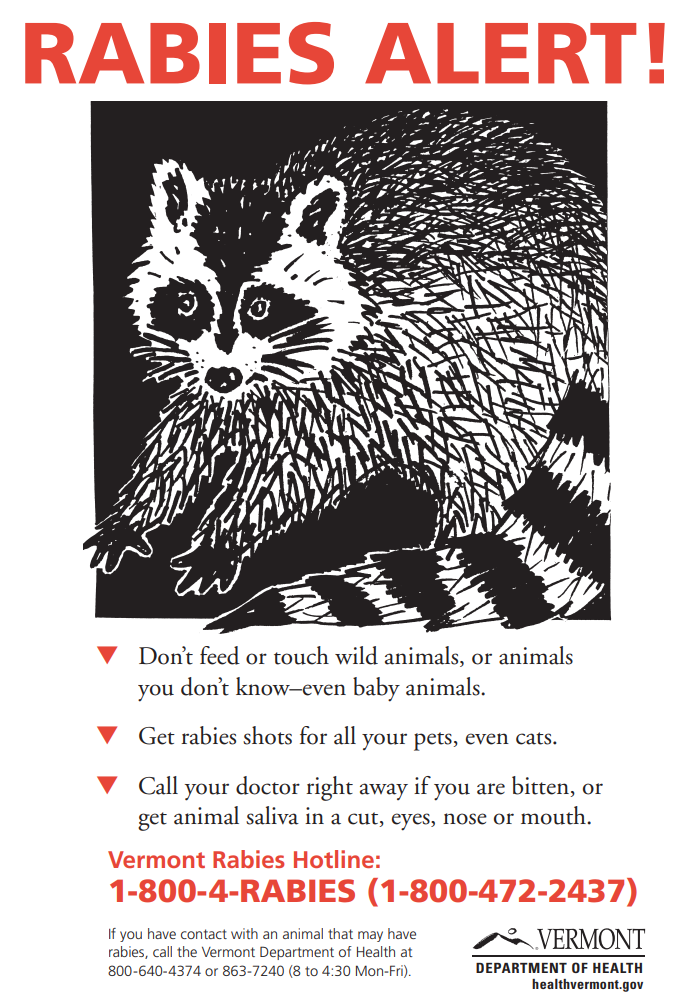Need Help Now?
Call the Vermont USDA Rabies Hotline at 1-800-4-RABIES (1-800-472-2437) or 1-802-223-8690.
Rabies is a deadly viral disease of the brain that infects mammals. The virus is spread through the bite of an infected animal. Non-bite exposures very rarely result in rabies. People cannot get rabies indirectly, such as petting or handling animals, or from contact with urine, blood or feces.
In Vermont, rabies is most commonly found in wild animals such as raccoons, skunks, foxes, bats and woodchucks. Cats, dogs and livestock can also get rabies if they have not been vaccinated for rabies.
How to Prevent Rabies in People and Pets
Follow these prevention tips to help keep yourself and your pets safe:
- Do not touch or pick up unfamiliar or wild animals – even baby animals – or try to feed them or make them into pets.
- Make sure trash, compost and recycling bins are tightly closed.
- Do not leave pet food outside.
- Feed pets inside the house and keep pets indoors at night. If they are out during the day, keep them on a leash or within a closed space. Pets that roam free are more likely to be exposed to a rabid animal.
- Make sure that all family pets get rabies shots and keep shots up to date. Animals can be vaccinated by a veterinarian or at a rabies clinic.
Visit the CDC website for more on rabies in domestic animals
If an Animal Bites You or Your Pet
- Try to capture the animal only if you can do it without getting bitten again. You are more likely to need rabies shots if the animal cannot be found. If the animal is wild, contact the Rabies Hotline (1-800-4-RABIES (1-800-472-2437)) or a Game Warden.
- Wash the bite wound well with soap and running water.
- Contact your doctor and Town Health Officer and follow their instructions.
Call your veterinarian if you believe your pet was exposed to a potentially rabid animal. They will be able to decide if your pet is at risk for rabies and tell you what steps to follow next.









